Make Text-to-Give Work for Your Organization
The Basics
41% of Americans don’t have a landline, which means that text-to-give has become a necessary tool for reaching your donors.
Text-to-give technology is a fantastic way for your organization to raise money from donors on the go. It’s quick, easy, and a low commitment option for people to donate to their favorite charities (like yours!). Plus, the average text-to-give donation is $107, and giving is already trending mobile, with 51% of nonprofit website visitors doing so on mobile devices (more statistics here!).
In order to donate to your cause, all a donor needs to do is to text your organization’s text-to-give number with the amount they’d like to give.
Let’s Look at an Example:
Say a donor wants to give $50. He’s waiting for the bus, and he sees this ad:
He’s compelled to text the number on the sign. But he’s never given before, so when he texts “50” to (503) 343-5551, he gets an immediate response back, prompting him to fill out a short payment form.
The donor confirms that he wants to send $50 to the Willamette Humane Society, and voila! He’s given in the short time before his bus pulls up.
Better yet, the next time he wants to give, whether it’s via text, online, or through an email, he can do so without filling out his information again. He can give in just 2 clicks!
Examples of Mobile Giving Transactions
Initial Text Message
Follow-up Email
In addition to being easy for your donors, text-to-give is also a no-brainer for your organization. It’s easy to set up, maintain, and promote.
How to Promote Your Text-to-Give Campaign
On social media
During live events
In your newsletter
In your email blasts
Make Recurring Gifts a Cinch
The Basics
Two gifts are better than one, right?
Of course they are! That’s why it’s doubly important to make sure that your mobile giving campaign is set-up to accept (and encourage) recurring donations.
If your mobile giving platform allows recurring gifts to be made, you can easily persuade a one-time donor to become a habitual gift-giver.
Even though most donors who give recurring gifts donate smaller amounts each month, they usually wind up contributing significantly more to your organization in the long-run.
How do you entice one-time contributors to become recurring donors?
It’s really quite simple. It’s all in how easy you make the process.
Even though most donors who give recurring gifts donate smaller amounts each month, they usually wind up contributing significantly more to your organization in the long-run.
Making the giving process intuitive
Reduce the number of required fields on your donation form
The more required fields that a donor has to fill out, the more likely they’ll be to abandon the donation process. Keep it to the bare minimum in order to make the process as painless and pleasant as possible.
Say thank you
Just because they’ve opted not to become recurring donors this time, it doesn’t mean that they won’t change their minds in the future. One way to tip the scales in your favor is to thank your donors properly and often. You can’t thank them enough!
Accept all forms of payment
There’s nothing worse than reaching the final stage of the donation process only to find out that your credit card isn’t supported by the organization’s payment processor. Don’t let this happen to your organization’s donors. Make sure your processor can handle all types of cards and payment methods.
Offer a small incentive
The incentive you offer doesn’t have to be monetary. It doesn’t have to cost you anything at all. You can offer tours of your nonprofit’s headquarters, social media shout-outs, or special promotional items. People love to feel as though they’re a part of something. Give your donors that feeling by including incentives for every donation made.
Use suggested donation amounts
Another way to speed up the donation process is by providing donors with preset donation amounts. Suggested donations keep donors from having to guess how much is the right amount to give, and it can encourage larger donations! You can set these amounts anywhere from $1 to $50 and above. Just make sure that there is enough variety so every donor has an amount they’re comfortable giving.
Consider password alternatives for account creation
In the long run, creating an account is beneficial because it keeps your donors’ information on file for future gifts, but donors have to remember their passwords for it to be effective. Instead, your organization can use another form of authentication that is more secure and requires no memorization, further simplifying the donation process.
Make Your Donation Page Mobile-Friendly
Four Components of a Mobile-Friendly Donation Page
Makes donating easy and intuitive
The fewer steps you make your donors take to give, the more willing they’ll be to complete the donation process. That means cutting down on required fields and any other distracting elements that are unnecessary.
Has multiple giving options
As we mentioned earlier, providing your donors with multiple options (including recurring gifts) is a surefire way to increase donations in the short-term and in the long-run.
Loads just as well on a mobile device as it does on a laptop or desktop
If a page takes multiple seconds, or even minutes, to load, then your donors will likely abandon ship and spend their time and money elsewhere. Be sure that your mobile donation page loads well and your buttons are easy to press.
Looks and feels like the rest of your mobile website
Your mobile donation page should have the same colors, theme, logo, and fonts as the rest of your website. If a donor lands on your donation page and doesn’t recognize that it’s your organization’s, they’re bound to be confused and, again, abandon ship.
Example of a Mobile-Friendly Donation Page
More people use their phones to surf the internet than they do their desktop or laptop computers. And it’s far more likely that a donor will find your nonprofit’s website using their phone or other mobile device. What does this mean for your nonprofit? Well, if you want to keep your donors’ attention, you’ll need to make sure that your website and your online donation page are mobile-friendly.
Raise More Money for a Specific Cause with Mobile Pledges
Steps for Receiving Mobile Pledges
Why Mobile Pledges Work
Mobile pledging has been proven to raise significant amounts of money. Some of the most successful mobile pledges raised tens of thousands of dollars in no time at all.
Whether you’re raising money for the public phase of your capital campaign, or you’re trying to fund a cure for diabetes, the process for mobile pledging is essentially the same.
As with traditional pledging, not all pledges are fulfilled. About 2-3% is the common attrition rate.
But for the most part, people tend to pledge more than they would donate otherwise.
The reasons why are unclear, but studies have shown that donors who pledge, on average, give more than other donors.
When the pledges are fulfilled, your nonprofit can expect a large amount of donations to come in pretty much simultaneously.
Mobile pledging has been proven to raise significant amounts of money. Some of the most successful mobile pledges raised tens of thousands of dollars in no time at all.
Make Even Your Offline Fundraising Mobile-Friendly
Offline Marketing Tactics
Now that you have all of the tools you’ll need to raise money via mobile devices, it’s time to explore the best ways to promote those giving avenues.
Although all of these giving options are on mobile devices (and some are also on desktop and laptop computers), some of the best ways to promote these giving options are actually completely offline!
In magazines
At bus stops
On flyers and posters
On promotional items, like T-shirts and mugs
What to Include with Marketing Materials
A QR code that leads donors to yourdonation page.
Your text-to-give number.
The address of your mobile-responsive website.
Your nonprofit’s email address
For a great example of a flyer that features both a QR code promotion and a text-to-give campaign, check out the poster below:
Get More Out of Your Email Marketing
Three traditional ways that nonprofits have made their emails more appealing to donors:
They’ve included a catchy subject line
Typically, they’ll try to incorporate action words like “Build” and “Act” in order to indicate that they’re focused on driving real change.
They’ve struck the right balance between pictures and words
Studies have shown that 65% of email readers prefer emails with more pictures than words. This is likely because the brain is able to process images 60,000 times faster than it can words.
They have a call-to-action
Most nonprofits will include either a link to an event sign-up sheet or a link to an online donation page as a part of their call-to-action.
Where Traditional Email Marketing Falls Short
Where these traditional tactics fall short is the last point.
Putting a link in your fundraising email means that a donor will have to see the link, click on the link, be led out of your email and onto a separate browser.
If they’re doing this on their mobile phone, you can guarantee that they’re going to have to pinch, swipe, and zoom to be able to fill out your online donation page. They’ll pull out their credit card and squint to type the tiny numbers into the tiny boxes on the form.
Unless they have unrelenting patience, chances are they’ll throw their hands up in frustration at this point, nearly losing their phone in the process.
Okay, maybe they won’t be so dramatic. But it’s not unreasonable for them to be frustrated by this clunky process.
What to Include with Marketing Materials
By incorporating an email donation button in every fundraising correspondence. Email donation buttons allow your donors to give to your organization without ever leaving their inboxes.
All they need to do is to click on one of the buttons (you can provide various amounts for donors to choose from). If they’ve given via text, online giving portal, or email before, then all they’ll have to do is hit send to confirm their donation amount.
Just two clicks, that’s it!
Using Social Media to Market Matching Gifts
As we said before, Facebook is one of the most downloaded and widely-used apps in the world.
It’s been around for over 10 years now, and its popularity is undeniable, with 1.65 billion monthly users logging on. Everyone from the little kid next door to your great-great grandmother’s third cousin is on the social network.
Not only are most people on Facebook, but more often than not, they’re scrolling through their newsfeeds on their phones. The same is true of Instagram, Twitter, and even LinkedIn. They’re all predominantly viewed on mobile devices.
What does mobile social media have to do with fundraising, though?
We’re glad you asked. Whether you’re seeking major gifts or just looking for a small donation from a follower, it’s important to keep your social media presence well-maintained.
If you keep a constant flow of communication going with your supporters (and you don’t overwhelm them with too many posts or #UnnecessaryHashtags), you can use social media as yet another marketing tool for all kinds of fundraising ventures.
If you keep a constant flow of communication going with your supporters (and you don’t overwhelm them with too many posts or #UnnecessaryHashtags), you can use social media as yet another marketing tool for all kinds of fundraising ventures.
Tip 1: Whereas Facebook will allow you to post up to 63,000 characters in a status update, Twitter limits users to 140 characters per tweet. Make sure you can say everything you need to say in just a few words.
Tip 2: Hashtags were invented for a reason: to catalogue and organize conversations on Twitter. Take advantage of this by including #RelevantHashtags in every tweet you send off. Pro tip: you can create your own hashtag.
Tip 3: Most people check their Twitter accounts while they’re at lunch, so the best time to post on Twitter is around 12 noon during the workweek.
Tip 1: Instagram won’t allow users to post links in individual posts, so the way to promote your mobile donation page is by including a link in your bio. Then, in every subsequent post, you can mention that the link can be found on your organization’s page, in the bio.
Tip 2: Adding a location, including relevant hashtags, and tagging other users is a great way to increase your following. People scrolling through their Discover page will be more likely to see a post of yours if it’s well identified and catalogued.
Tip 3: The absolute best times to post on Instagram are 5 PM and 2 AM. Don’t worry; you don’t have to stay up til 2 AM to post. You can easily schedule for certain posts to go out at certain times with a simple-to-use app, like Hootsuite.
Snapchat
Tip 1: Videos are the most engaging content to post on Snapchat. For one thing, they’re more memorable. But they’re mostly just more fun for your followers to watch!
Tip 2: Add filters and geo-tags to your stories to make them more personal (and fun!). Geo-tags are unique to your location, and thus they show followers where you’re doing the most work on the ground.
Tip 3: Since it’s such an instantaneous form of social media, Snapchat has no “best time” to post. You can engage with followers in real time, anytime.
Learn More About Your Donors Through Info Capture
What is information capture?
When you’re trying to maximize your fundraising, it’s important to keep in mind your key fundraising metrics.
But how can you track your key performance indicators (KPI) if you don’t have all of the information you need?
Your problem can be solved with two words: Information. Capture.
Information capture is a feature of mobile giving that stores useful information about your mobile donors and their habits automatically. This information can be exported and seamlessly integrated into your nonprofit’s existing donor database.
Name
Phone number
Email address
Address
How can prospect research help with information capture?
With this sort of information, your nonprofit can easily conduct prospect research on your mobile donors.
Just because a donor has only given $100 via text message, it doesn’t mean that they’re not equally capable of giving $100,000 if they’re properly stewarded.
The only way you’d really know something like that is if you had the right information about a mobile donor and were able to conduct a prospect screening on them. You could find out vital information like:
Real estate holdings
Past donations to nonprofits
Business affiliations
Stock shares
Leverage Your Current Donor Base with Peer-to-Peer Fundraising
How to Use Mobile Peer-to-Peer Fundraising
Enlist the help of your nonprofit’s most active advocates and key players to get the word out about your mobile giving campaign.
Supply your organization’s advocates with your crowdfunding page and/or the ability to create one of their own on your behalf. Make sure that they’re able to share the links easily on social media sites like Facebook, Twitter, and Instagram.
They can reach out to their respective social networks, their friends, family, and coworkers, and even random strangers on the subway.
Peer-to-peer fundraising, in this way, can be used to leverage your existing donor base to extend your nonprofit’s reach and efficacy.
Anyone and everyone can donate to your cause on the go with a mobile-responsive crowdfunding page.
Once those new donors have given, you’ll have their info through information capture.
Because they’ve been cultivated by people who are close to them, they’ll feel a more personal connection to your organization.
Encourage Donors to Give From Their Phones at Live Events
Where to Promote Mobile Giving
Fundraising Dinners
Benefit Concerts
Galas
Casino Fundraisers
Fundraising Carnivals
5K Fun Runs
How to Demonstrate Mobile Giving at an Event
In addition to raising money via event tickets, your organization can raise money through mobile donations.
Chances are, your guests have their smartphones with them, and the process can be completed quickly so donors can get back to enjoying your event.
Have one of your event speakers ask guests to make a donation via text message and demonstrate the process. Additionally, you can display images or a video that explains how donors can give via their phones.
A fundraising event is the perfect way to introduce mobile giving to your donors because they can get familiar with this method and have volunteers guide them through the process if they need it.
What’s more? Donors that find the giving experience enjoyable and fun will be more likely to tell their friends and family about mobile giving.
Additional Mobile Giving Resources
Mobile Fundraising: The Guide
Mobile giving is a broad fundraising term that encompasses a lot of different methods.
If you want to be well-versed in mobile fundraising and put yourself ahead of the curve, check out this ultimate guide to mobile giving!
Best Text-to-Give Tools
Text-to-give is just one form of mobile fundraising, but it’s incredibly popular!
If you’re looking for a text-to-give provider, we’ve compiled a list of the top text-to-give tools for nonprofits and churches.
Guide to Text-to-Give
If you want to go more in-depth with text-to-give, we’ve got a great resource for you!
Check out Double the Donation’s guide to text-to-give and learn how your nonprofit can make this fundraising method work for you.



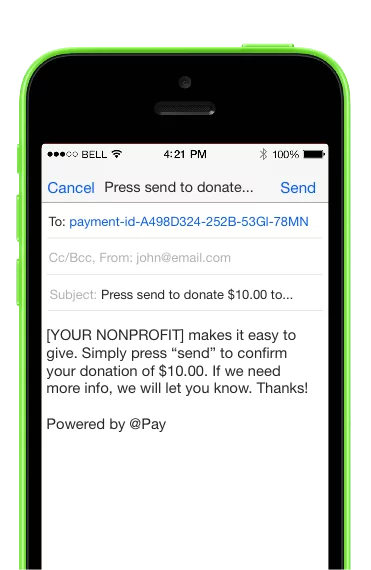
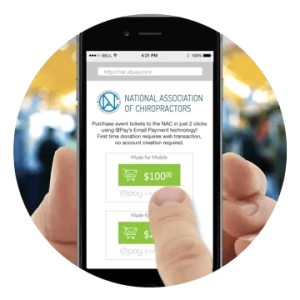



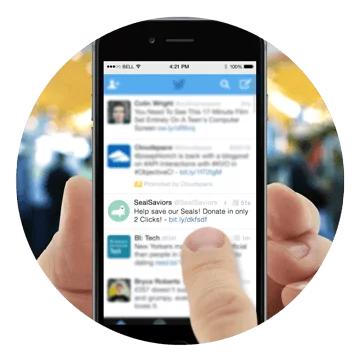



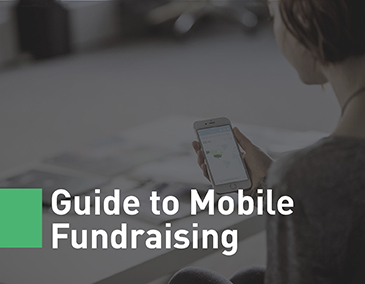
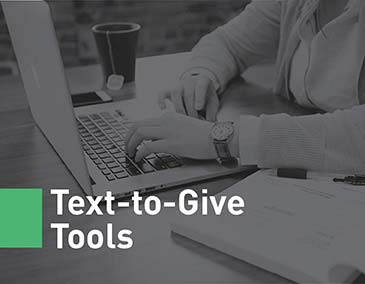
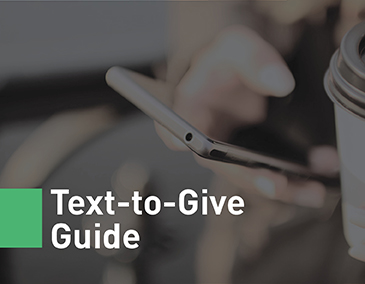


Market Matching Gifts Through Social Media